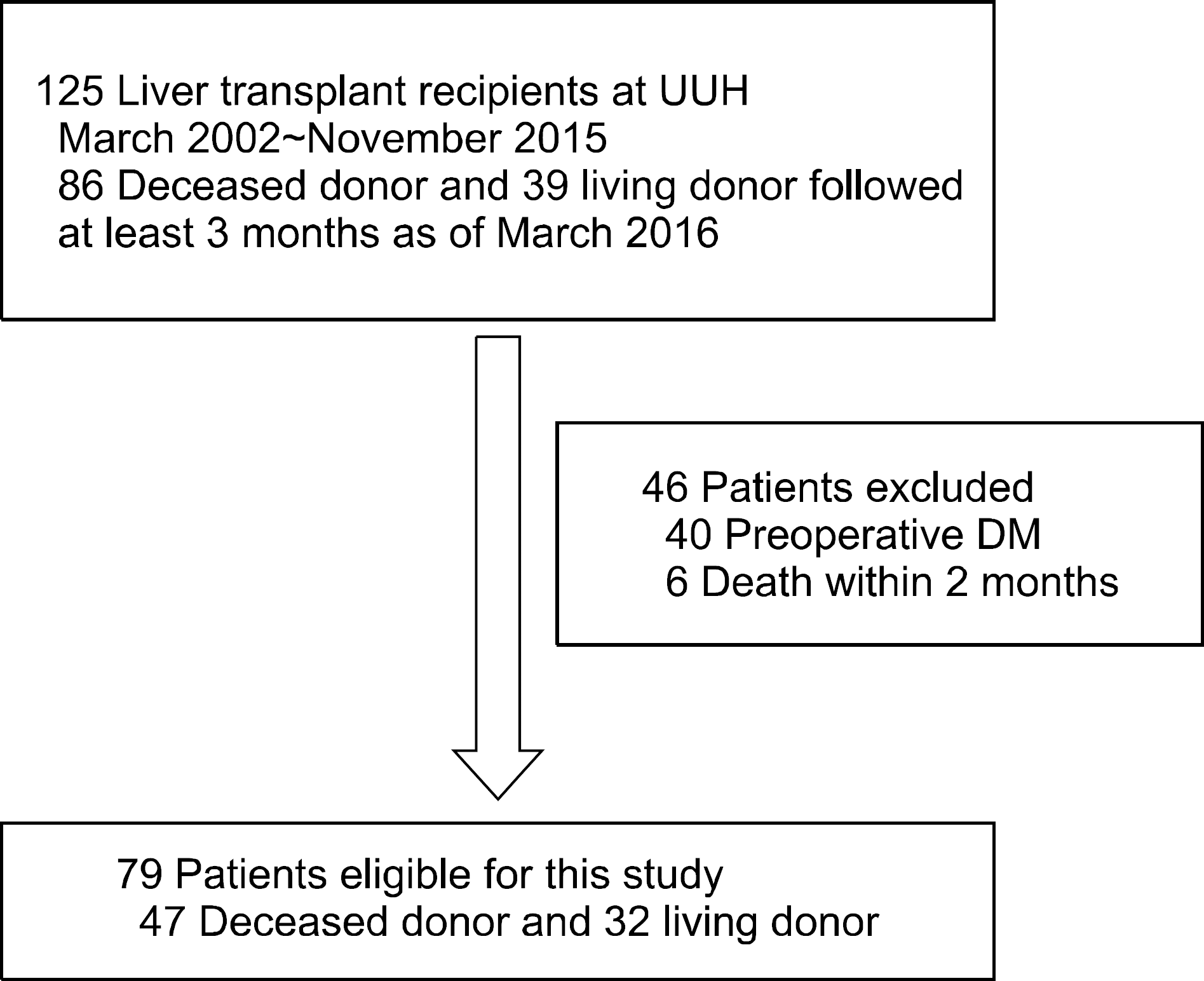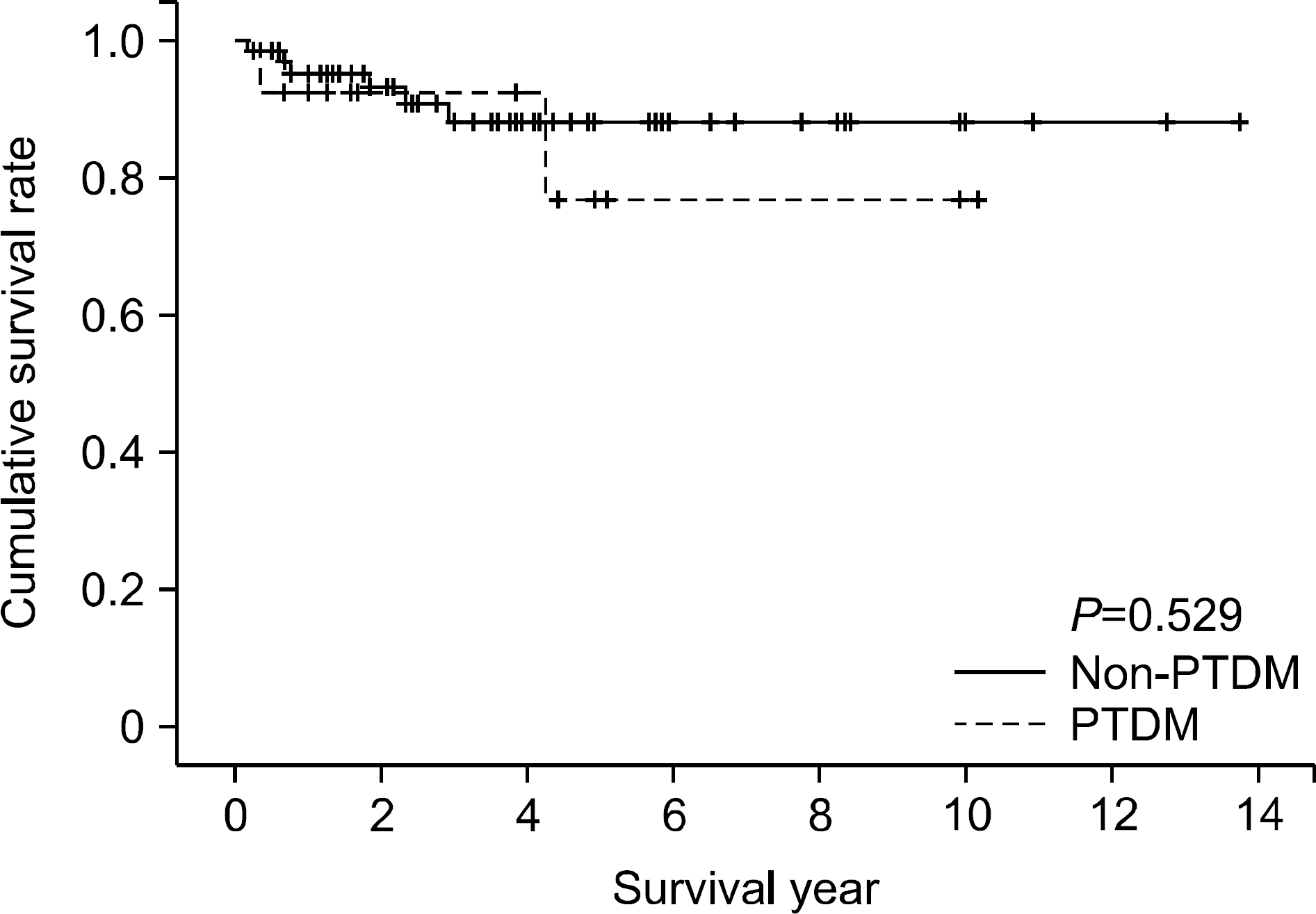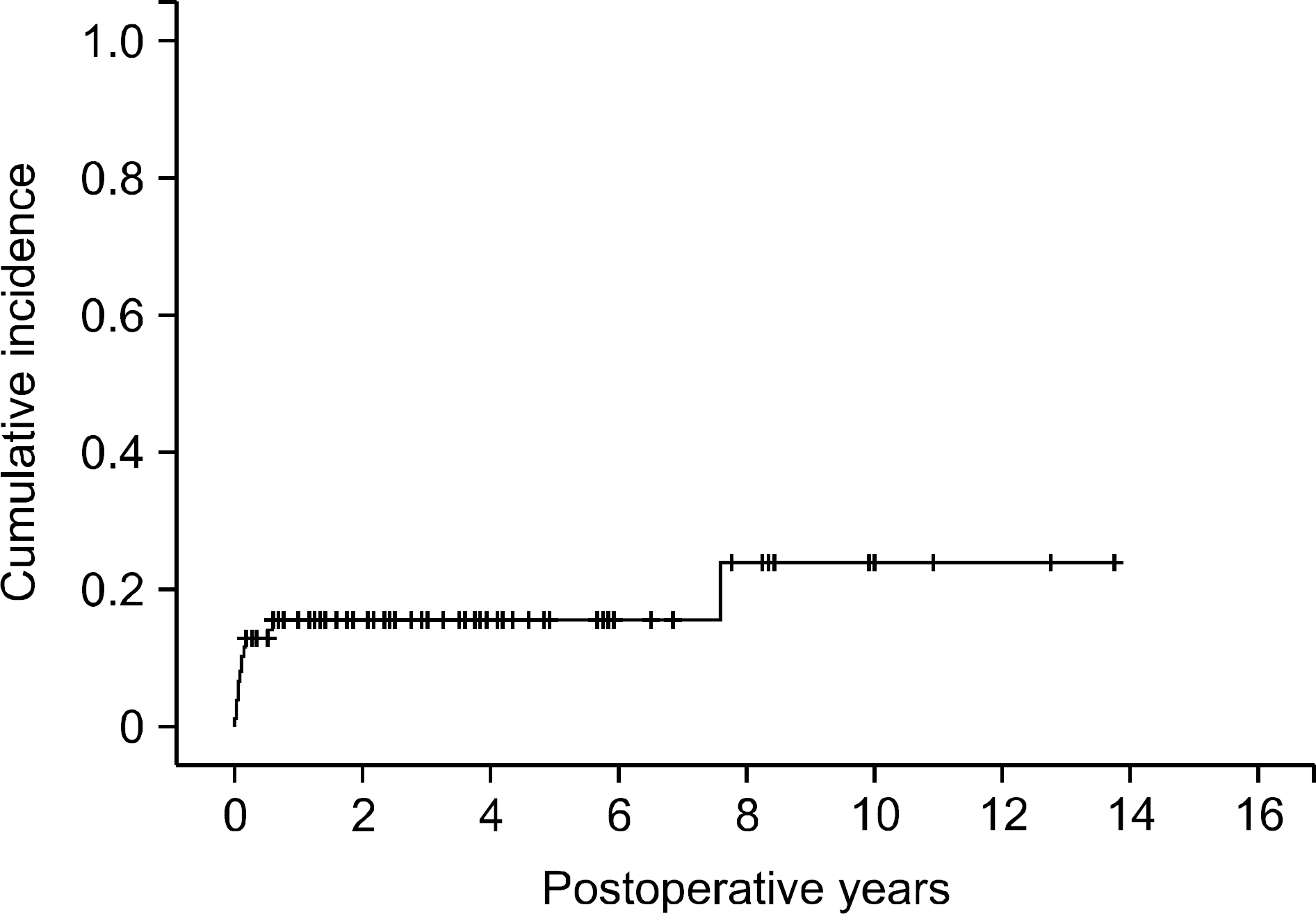1). Korean Network for Organ Sharing. Annual report of the transplant 2014 [Internet]. Seoul: KONOS;c2014. [cited 2016 Sep 13]. Available from:. http://konos.go.kr.
2). Dopazo C., Bilbao I., Castells LL., Sapisochin G., Moreiras C., Campos-Varela I, et al. Analysis of adult 20-year survivors after liver transplantation. Hepatol Int. 2015. 9:461–70.

3). Benhamou PY., Penfornis A. Natural history, prognosis, and management of transplantation-induced diabetes mellitus. Diabetes Metab. 2002. 28:166–75.
4). de Boccardo G., Kim JY., Schiano TD., Maurette R., Gagliardi R., Murphy B, et al. The burden of chronic kidney disease in long-term liver transplant recipients. Transplant Proc. 2008. 40:1498–503.

5). Zaccardi F., Webb DR., Yates T., Davies MJ. Pathophysiology of type 1 and type 2 diabetes mellitus: a 90-year perspective. Postgrad Med J. 2016. 92:63–9.

6). Cha BS., Moon JH. Management of posttransplantation diabetes mellitus (PTDM). J Korean Soc Transplant. 2011. 25:8–14. (차봉수, 문재훈. 이식 후 당뇨병의 관리. 대한이식학회 지 2011;25: 8-14.).

7). Shapiro R., Scantlebury VP., Jordan ML., Vivas C., Gritsch HA., McCauley J, et al. Reversibility of tacrolimus-induced posttransplant diabetes: an illustrative case and review of the literature. Transplant Proc. 1997. 29:2737–8.

8). Heisel O., Heisel R., Balshaw R., Keown P. New onset diabetes mellitus in patients receiving calcineurin inhibitors: a systematic review and meta-analysis. Am J Transplant. 2004. 4:583–95.

9). Davidson J., Wilkinson A., Dantal J., Dotta F., Haller H., Hernandez D, et al. New-onset diabetes after transplantation: 2003 International consensus guidelines. Proceedings of an international expert panel meeting. Barcelona, Spain, 19 February 2003. Transplantation. 2003. 75(10 Suppl):SS3–24.
10). Sharif A., Hecking M., de Vries AP., Porrini E., Hornum M., Rasoul-Rockenschaub S, et al. Proceedings from an international consensus meeting on posttransplantation diabetes mellitus: recommendations and future directions. Am J Transplant. 2014. 14:1992–2000.

11). Pageaux GP., Faure S., Bouyabrine H., Bismuth M., Assenat E. Long-term outcomes of liver transplantation: diabetes mellitus. Liver Transpl. 2009. 15(Suppl 2):S79–82.

12). Montori VM., Basu A., Erwin PJ., Velosa JA., Gabriel SE., Kudva YC. Posttransplantation diabetes: a systematic review of the literature. Diabetes Care. 2002. 25:583–92.
13). Hjelmesaeth J., Hartmann A., Kofstad J., Stenstrom J., Leivestad T., Egeland T, et al. Glucose intolerance after renal transplantation depends upon prednisolone dose and recipient age. Transplantation. 1997. 64:979–83.
14). Maes BD., Kuypers D., Messiaen T., Evenepoel P., Mathieu C., Coosemans W, et al. Posttransplantation diabetes mellitus in FK-506-treated renal transplant recipients: analysis of incidence and risk factors. Transplantation. 2001. 72:1655–61.

15). Vincenti F., Friman S., Scheuermann E., Rostaing L., Jenssen T., Campistol JM, et al. Results of an international, randomized trial comparing glucose metabolism disorders and outcome with cyclosporine versus tacrolimus. Am J Transplant. 2007. 7:1506–14.

16). Shivaswamy V., Boerner B., Larsen J. Post-transplant diabetes mellitus: causes, treatment, and impact on outcomes. Endocr Rev. 2016. 37:37–61.

17). Hur KY., Kim MS., Kim YS., Kang ES., Nam JH., Kim SH, et al. Risk factors associated with the onset and progression of posttransplantation diabetes in renal allograft recipients. Diabetes Care. 2007. 30:609–15.

18). Pageaux GP., Dorent R., Mourad G., Calmus Y. Analysis of well-being after organ transplantation in a large cohort of French patients. Transplant Proc. 2002. 34:1687–8.

19). Bloom RD., Crutchlow MF. Transplant-associated hyperglycemia. Transplant Rev (Orlando). 2008. 22:39–51.

20). White DL., Ratziu V., El-Serag HB. Hepatitis C infection and risk of diabetes: a systematic review and meta-analysis. J Hepatol. 2008. 49:831–44.

21). Huang JW., Famure O., Li Y., Kim SJ. Hypomagnesemia and the risk of new-onset diabetes mellitus after kidney transplantation. J Am Soc Nephrol. 2016. 27:1793–800.

22). Kawaguchi T., Ide T., Taniguchi E., Hirano E., Itou M., Sumie S, et al. Clearance of HCV improves insulin resistance, beta-cell function, and hepatic expression of insulin receptor substrate 1 and 2. Am J Gastroenterol. 2007. 102:570–6.

23). Yadav AD., Chang YH., Aqel BA., Byrne TJ., Chakkera HA., Douglas DD, et al. New onset diabetes mellitus in living donor versus deceased donor liver transplant recipients: analysis of the UNOS/OPTN database. J Transplant. 2013. 2013:269096.

24). van Hooff JP., Christiaans MH., van Duijnhoven EM. Evaluating mechanisms of post-transplant diabetes mellitus. Nephrol Dial Transplant. 2004. 19(Suppl 6):vi8–12.

25). Arner P., Gunnarsson R., Blomdahl S., Groth CG. Some characteristics of steroid diabetes: a study in renal-transplant recipients receiving high-dose corticosteroid therapy. Diabetes Care. 1983. 6:23–5.

26). Simmons LR., Molyneaux L., Yue DK., Chua EL. Steroid-induced diabetes: is it just unmasking of type 2 diabetes? ISRN Endocrinol. 2012. 2012:910905.

27). Neylan JF. Racial differences in renal transplantation after immunosuppression with tacrolimus versus cyclosporine. FK506 Kidney Transplant Study Group. Transplantation. 1998. 65:515–23.
28). Harada N., Sugawara Y., Akamatsu N., Kaneko J., Tamura S., Aoki T, et al. New-onset diabetes mellitus developing in Asian adult living donor liver transplant recipients: a single-center experience. J Hepatobiliary Pancreat Sci. 2013. 20:634–8.

29). Ahn HY., Cho YM., Yi NJ., Suh KS., Lee KU., Park KS, et al. Predictive factors associated with the reversibility of post-transplantation diabetes mellitus following liver transplantation. J Korean Med Sci. 2009. 24:567–70.

30). Koivisto M., Valta P., Hockerstedt K., Lindgren L. Magnesium depletion in chronic terminal liver cirrhosis. Clin Transplant. 2002. 16:325–8.

31). Rodriguez-Moran M., Guerrero-Romero F. Oral magnesium supplementation improves insulin sensitivity and metabolic control in type 2 diabetic subjects: a randomized double-blind controlled trial. Diabetes Care. 2003. 26:1147–52.
32). Jindal RM., Hjelmesaeth J. Impact and management of posttransplant diabetes mellitus. Transplantation. 2000. 70(11 Suppl):SS58–63.
33). Cole EH., Johnston O., Rose CL., Gill JS. Impact of acute rejection and new-onset diabetes on long-term transplant graft and patient survival. Clin J Am Soc Nephrol. 2008. 3:814–21.







 PDF
PDF ePub
ePub Citation
Citation Print
Print



 XML Download
XML Download